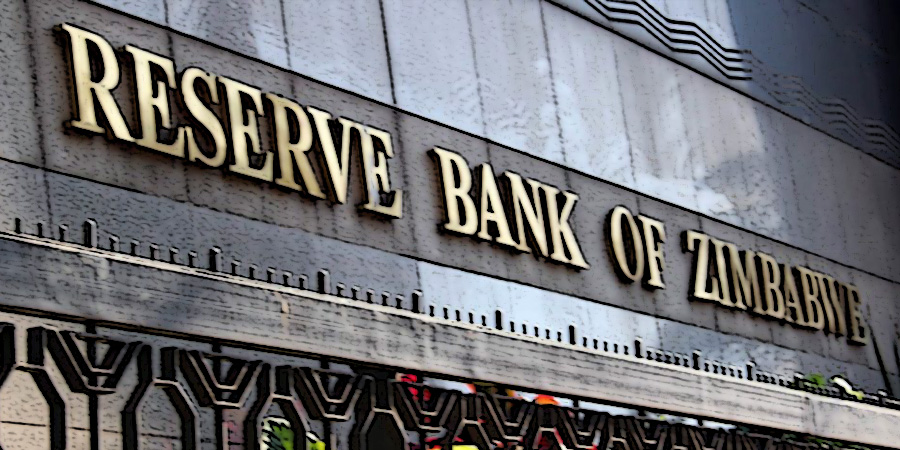Fresh off the Heroes and Defence Forces Day holidays the Reserve Bank of Zimbabwe released a mid-term monetary policy statement to go with the Mid-term supplementary budget released by the Ministry of Finance at the end of July. The hard-working team at 80 Samora Machel Avenue released a lengthy (as it should be) document that covered the performance of the previous monetary policy, economic developments, inflation developments, reserve money developments, banking sector performance and the all-important monetary policy stance for the next 6 months.
The statement goes into great detail to explain developments over the last 6 months in many economic spheres. Many highlights can be drawn from this but the graph extracted from the document captures the most important information to draw from the document that is not already in the public domain. The relationship between money supply growth and inflation is stronger than ever. The intervention has tempered inflation in the 4th quarter of 2021 and the 1st quarter of 2022. However, a resumption in money supply growth was met with a corresponding resurgence in inflation as we have observed.

Monetary policy stance
Of course, we would like to be as forward-looking as possible so our major interest is in the monetary policy stance for the next six months. There are quite a few highlights that will shake up the monetary space in Zimbabwe. We will skip over things that remain the same such as interest rates and reserve money growth targets.
Foreign currency statutory reserves
The apex banks note that foreign currency loans are on the increase making up over 50% of loans. To secure the banking sector banks will be required to maintain foreign currency statutory reserves of 5% on all deposits and 2.5% on term (or time) deposits. In plain English, banks will not be able to lend out all the foreign currency deposited with them and must keep the aforementioned percentages on hand. This cools down lending but also ensures banks have foreign currency on hand to satisfy depositors’ rights to their money.
BDCs get US$5K per transaction and unlimited purchases at WBWS
Bureau de changes received a further vote of confidence. After being readmitted into the system and allowed to sell the foreign currency they have had limits increased from US$500 per week to US$5000 per transaction per month for medical expenses, education, business, airfares, holiday travel and subscriptions. All transactions will be processed at the interbank or willing buyer willing seller (WBWS) rate. There is no cap on the amount BDCs can purchase. This is effective from the 15th of August 2022.
WBWS limits up from US$10K to US$20K
Banks also received a bump in their interbank rate transaction limits. From the 15th of August, they can transact up to US$20 000 per transaction up from US$10 000 per transaction. This is for transactions relating to goods, services, raw materials, capital goods and other purposes mentioned under BDCs.
One Tenth, one quarter and one half ounce gold coins coming
Smaller gold coin denominations are coming. One tenth, one quarter and half ounce coins will be released in November following the high demand for the full ounce gold coins. This is positive news as the bank has listened to the pleas of many about the high value of gold coins excluding many from storing value in the yellow metal. We can assume at current prices that values of US$180 (one tenth), US$450 (quarter ounce) and US$900 (half an ounce) will leave very few complaining about the accessibility of the coins.
Confirmation of auction rate removal from pricing
The RBZ formally removed the auction from a pricing reference. This was already put in place when the interbank rate was made the reference rate for pricing but formality sets things right across the board. The auction will roll on however as it serves an allocative purpose.
CBDC white paper coming soon
Central Bank Digital Currencies are a big topic in the world and the RBZ has already made known that Zimbabwe too is working on rolling out a CBDC. CBDCs similarly use blockchain technology to cryptocurrencies but are issued, backed and controlled by central banks. The policy statement informed us that a “white paper” is coming soon and submissions from the public will be entertained after the paper is launched.
Month on Month inflation to decline between 3 and 10% rest of the year
The outlook also included the direction of inflation. The central bank expects month-on-month inflation to decline by between 3 and 10% within the next 6 months. Year on year inflation is expected to continue its march in the short run.
We received an interesting set of measures from the central bank. The incoming CBDC white paper, the smaller denomination gold coins and the liberation of BDCs are very good signs going forward. The optimistic inflation expectation is welcome though we have had optimistic forecasts before that have flattered to deceive.








